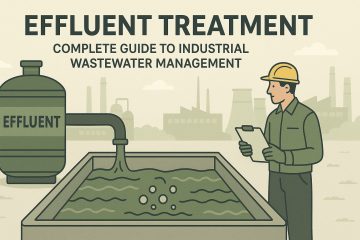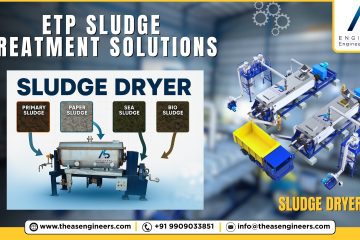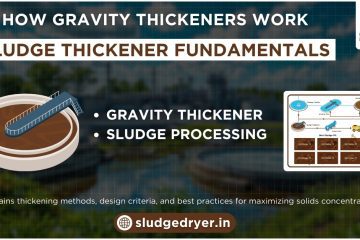Did you know that approximately 4.2 billion people worldwide lack access to safely managed sanitation services? As cities across developing nations experience unprecedented growth, a silent crisis grows beneath the surface. Faecal sludge treatment plants represent one of the most crucial yet overlooked infrastructures in rapidly urbanizing regions. These facilities manage the waste from billions of people relying on on-site sanitation systems like septic tanks and pit latrines, transforming potentially hazardous material into safe byproducts.
The consequences of inadequate faecal sludge management extend far beyond unpleasant odors. They directly impact public health, environmental quality, and economic development. When untreated waste contaminates water supplies, it creates perfect conditions for waterborne diseases that affect millions annually. This guide explores how faecal sludge treatment plants provide the comprehensive solution needed for sustainable urban development in the 21st century.
Table of contents
- What Exactly Is a Faecal Sludge Treatment Plant?
- Core Components of Faecal Sludge Treatment Plants
- Design Considerations for Effective Faecal Sludge Treatment Plants
- Operational Challenges and Solutions in Faecal Sludge Management
- Technological Innovations Transforming Faecal Sludge Treatment
- Regulatory Frameworks and Compliance
- Case Studies: Successful Implementation Models
- Planning and Implementing Your FSTP Project
- Conclusion: The Future of Faecal Sludge Management
What Exactly Is a Faecal Sludge Treatment Plant?
Definition and Purpose
A faecal sludge treatment plant (FSTP) is a specialized facility designed to receive, process, and treat human waste collected from on-site sanitation systems. Unlike conventional sewage treatment plants that handle wastewater flowing through sewers, FSTPs specifically manage concentrated waste that must be physically transported to the facility, typically by vacuum trucks or other collection vehicles.
The primary purposes of these facilities include:
- Treating human waste to reduce pathogens and environmental hazards
- Recovering valuable resources like water, energy, and nutrients
- Producing safe end products that can be safely disposed of or repurposed
- Protecting public health and water resources from contamination
The Critical Need for FSTPs in Developing Regions
For many rapidly developing cities, particularly in Asia and Africa, centralized sewerage systems cover only a small fraction of urban areas. According to the World Health Organization, over 50% of the global population relies on on-site sanitation systems. Without proper treatment facilities, the waste from these systems often ends up dumped into waterways, vacant land, or drainage systems.
FSTPs bridge this sanitation gap by providing appropriate treatment solutions that:
- Require less capital investment than citywide sewerage networks
- Can be implemented more quickly than conventional systems
- Are adaptable to various urban contexts and population densities
- Create sustainable management pathways for human waste
Core Components of Faecal Sludge Treatment Plants
Reception and Preliminary Treatment
When vacuum trucks arrive at the treatment facility, the journey of transformation begins. The reception area serves as the gateway where faecal sludge enters the treatment system. This zone typically includes:
Receiving Station: A designated area with proper connections for vehicles to discharge their contents safely. Modern facilities include flow meters to measure incoming volumes and sampling points for quality control.
Screening Systems: Mechanical screens remove non-biodegradable materials like plastics, textiles, and other debris that could damage equipment or disrupt biological processes. These screens range from simple manual racks to sophisticated automated systems with washing mechanisms.
Grit Removal: Sand, small stones, and other inorganic particles are separated to prevent abrasion damage to pumps and downstream equipment.
Primary Treatment Processes
After preliminary screening, the sludge undergoes primary treatment to separate liquids from solids:
Settling/Sedimentation Tanks: Gravity-based systems where heavier solids sink to the bottom, forming a dense sludge layer while clarified liquid rises to the top. These tanks are designed with specific detention times to optimize separation.
Anaerobic Digesters: Enclosed reactors where microorganisms break down organic matter in the absence of oxygen, reducing sludge volume while potentially generating biogas as a valuable byproduct. Digestion periods typically range from 15-30 days depending on climate and design parameters.
Stabilization Ponds: Large, shallow basins where natural processes work to reduce pathogens and stabilize organic matter. These systems require significant land area but offer low operational complexity.
Secondary Treatment Options
The liquid fraction (effluent) requires further treatment to remove remaining contaminants:
Constructed Wetlands: Engineered systems using plants, soils, and microbial communities to filter and treat wastewater through natural processes. These systems mimic the water purification functions of natural wetlands.
Anaerobic Baffled Reactors: Compartmentalized tanks that force wastewater to flow under and over baffles, maximizing contact with active microbial populations that digest organic matter.
Trickling Filters: Biological filtration systems where effluent trickles over a bed of media (rocks, plastic, or other materials) covered with biofilm that absorbs and consumes organic pollutants.
Waste Stabilization Ponds: Series of ponds (anaerobic, facultative, and maturation) that progressively treat wastewater through various biological processes, often requiring substantial land area but minimal energy input.
Solids Treatment and Resource Recovery
The separated solids undergo dedicated processing to create safe, usable end products:
Drying Beds: Sand-filled basins where dewatering occurs through drainage and evaporation, typically requiring 1-4 weeks depending on climate conditions and sludge characteristics.
Mechanical Dewatering: Equipment like belt presses, screw presses, or centrifuges that accelerate water removal through mechanical force, producing drier sludge cake in much less time than passive methods.
Composting Facilities: Areas where dewatered sludge is mixed with organic materials (like wood chips or agricultural waste) and aerobically decomposed to produce soil amendments.
Thermal Drying and Carbonization: Advanced processes using heat to further dry sludge or convert it to fuel products like biochar, which can serve as an energy source or soil conditioner.
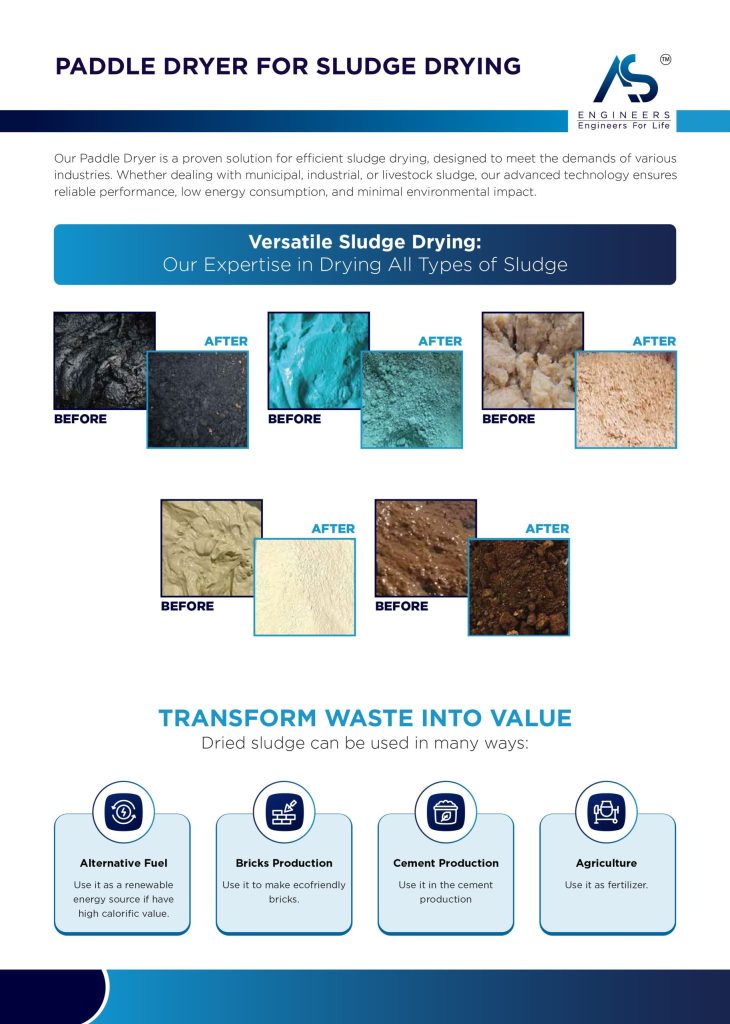
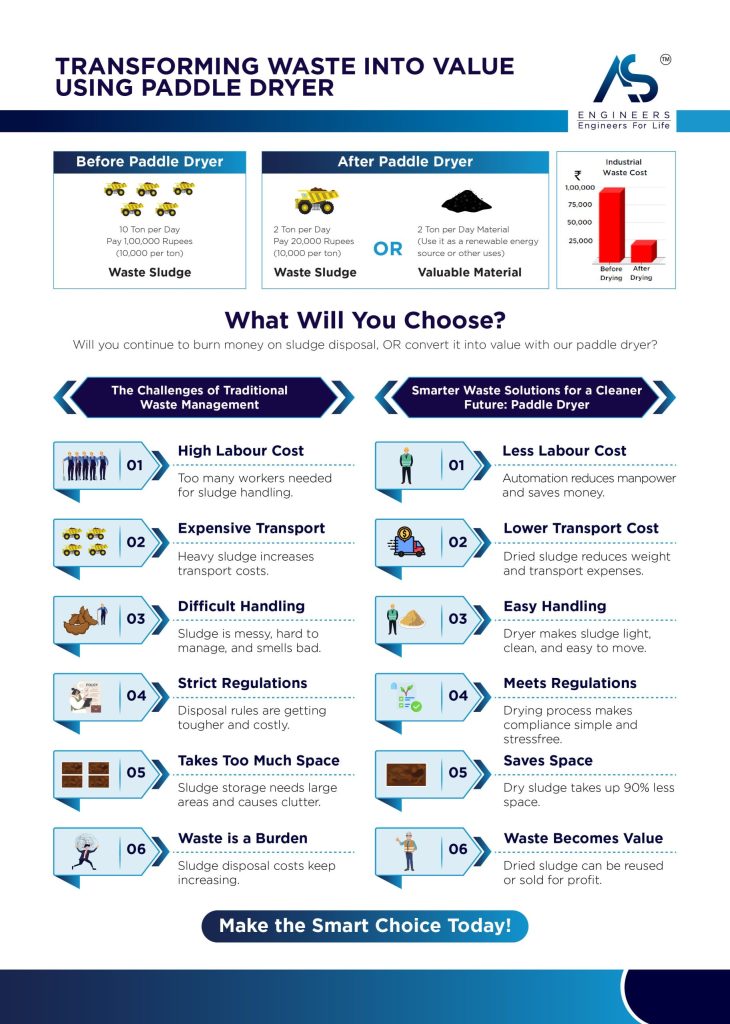
Design Considerations for Effective Faecal Sludge Treatment Plants
Site Selection Parameters
Choosing the right location fundamentally impacts a treatment plant’s success. Key factors include:
Proximity to Service Areas: Plants should be reasonably close to collection areas to minimize transportation costs and emissions, yet far enough from dense residential zones to prevent nuisance concerns.
Topography and Drainage: Ideally, sites should allow for gravity flow through treatment processes to reduce pumping requirements. Good drainage prevents flooding during rainy seasons.
Land Availability: Sufficient space must accommodate not only current needs but future expansion. Passive systems like drying beds require substantially more land than mechanized alternatives.
Buffer Zones: Adequate distance from sensitive areas like water sources, schools, and residential neighborhoods helps manage odor issues and public perception.
Accessibility: All-weather roads that can support heavy vacuum trucks are essential for year-round operation.
Climate-Responsive Design Elements
Treatment processes must adapt to local environmental conditions:
Rainfall Patterns: In high-rainfall regions, covered structures for drying beds prevent rewetting of partially dewatered sludge. Stormwater management systems protect treatment units from flooding.
Temperature Variations: Biological processes operate optimally within specific temperature ranges. Cold climates may require insulation for anaerobic digesters or greenhouse structures over drying beds.
Solar Exposure: Strategic orientation maximizes solar drying potential in resource-constrained settings. Some facilities incorporate solar panels to power operations.
Wind Direction: Careful positioning of potential odor sources relative to prevailing winds minimizes impacts on neighboring communities.
Capacity Planning and Scalability
Designing for an uncertain future requires strategic foresight:
Modular Design Approaches: Building treatment trains that can be replicated allows for phased expansion as demand increases. This approach spreads capital costs over time while maintaining treatment efficiency.
Population Growth Projections: Designs should account for urban expansion, with capacity calculations based on 10-20 year demographic forecasts and changing sanitation behaviors.
Seasonal Variations: Many regions experience significant fluctuations in sludge generation due to tourism, migration patterns, or rainfall changes. Systems must handle peak loads without compromising treatment quality.
Technology Adaptability: Infrastructure should allow for technology upgrades as innovations emerge or as operational experience suggests improvements.
Cost Considerations and Financial Sustainability
Building a treatment plant is just the beginning—sustaining operations presents the greater challenge:
Capital vs. Operating Costs: Lower-tech solutions often have minimal construction costs but higher labor requirements, while mechanized systems require larger initial investments but may reduce long-term operational expenses.
Revenue Generation Pathways: Sustainable facilities incorporate resource recovery elements that produce marketable products like compost, irrigation water, or energy to offset operational costs.
Fee Structures: Realistic tariff systems must balance affordability for users with revenue needs for operations. Some successful models incorporate cross-subsidies where commercial users pay premium rates that subsidize household services.
Maintenance Provisions: Designs should prioritize equipment and materials available locally to prevent operational failures due to import delays or currency fluctuations.
Operational Challenges and Solutions in Faecal Sludge Management
Daily Operational Procedures
Reliable treatment requires consistent management protocols:
Intake Management: Controlling what enters the system is critical. This includes scheduling delivery times to prevent overwhelming reception facilities, sampling incoming loads for unusual contaminants, and maintaining accurate records of volumes and sources.
Process Monitoring: Regular testing of parameters like pH, solids content, and pathogen levels at various treatment stages ensures the system functions as designed. Simple field tests allow operators to make real-time adjustments.
Maintenance Schedules: Preventive maintenance prevents costly breakdowns. Tasks range from daily cleaning of screens to weekly inspection of pumps and monthly servicing of mechanical equipment.
Staff Safety Protocols: Working with faecal materials carries health risks. Proper personal protective equipment, vaccination programs, and handling procedures protect the workforce from disease exposure.
Overcoming Common Technical Difficulties
Even well-designed systems encounter operational challenges:
High Variation in Sludge Characteristics: Unlike municipal sewage, faecal sludge composition varies dramatically depending on containment type, emptying frequency, and local practices. Treatment systems must handle everything from liquid septage to dense pit latrine contents.
Clogging and System Blockages: Accumulation of grit, garbage, and non-biodegradable materials frequently disrupts pumps and pipes. Solutions include improved pre-screening, regular flushing protocols, and designing for easy access to potential blockage points.
Odor Management: Hydrogen sulfide and ammonia from anaerobic decomposition create persistent odor issues. Effective management combines proper buffer zones, strategic use of vegetation barriers, biofilters, and chemical treatment where necessary.
Seasonal Treatment Variations: Rain can overwhelm open treatment components while prolonged dry periods might slow biological processes. Operational flexibility includes adjusting retention times, using covered areas during wet seasons, and maintaining emergency storage capacity.
Community Engagement Strategies
Technical solutions alone cannot ensure success without social acceptance:
Addressing NIMBY Concerns: “Not In My Backyard” resistance often emerges when treatment facilities are planned. Transparent communication about odor control, traffic management, and public health benefits helps build community support.
Public Education Programs: Many communities lack understanding of why proper faecal sludge management matters. Educational initiatives connecting sanitation practices to tangible outcomes like cleaner water bodies and reduced disease burden build constituency for services.
Stakeholder Involvement: Including community representatives in planning and monitoring creates ownership and accountability. Some successful projects incorporate community oversight committees that regularly inspect facilities and report concerns.
Incentive Systems: Recognition programs for neighborhoods with high collection service utilization or competitive pricing for early adopters can accelerate acceptance of new systems.
Technological Innovations Transforming Faecal Sludge Treatment
Emerging Treatment Technologies
The field is evolving rapidly, with innovations that enhance efficiency and resource recovery:
Black Soldier Fly Larvae Processing: These remarkable insects rapidly consume organic waste while accumulating proteins and lipids in their bodies. Harvested larvae become high-value animal feed, creating a lucrative revenue stream from waste processing.
LaDePa (Latrine Dehydration Pasteurization): This South African innovation combines mechanical dewatering with infrared heating to produce pathogen-free soil conditioner from pit latrine waste, addressing the challenge of dense sludge that conventional systems struggle to process.
Omni-Processors: Integrated systems that combine dewatering, combustion, steam generation, and water recovery to produce electricity and clean water from sludge. While capital-intensive, these systems achieve remarkable resource recovery rates.
Membrane Technology Applications: Adaptations of water treatment membranes allow for advanced liquid filtration, producing high-quality effluent that meets stringent reuse standards with smaller footprints than conventional biological treatment.
Digitalization and Monitoring Solutions
Technology extends beyond treatment processes to management systems:
IoT Sensor Networks: Remote monitoring devices track parameters like tank levels, flow rates, and treatment conditions in real-time, alerting operators to problems before they become critical failures.
Mobile Payment Integration: Digital payment platforms connect service users with collection companies and treatment facilities, improving financial tracking and reducing transaction costs.
GIS-Based Collection Optimization: Mapping tools help vacuum truck operators plan efficient routes, reducing fuel consumption and increasing daily service capacity.
Blockchain for Service Verification: Some pioneering projects use distributed ledger technology to create transparent, tamper-proof records of service delivery, valuable for regulatory compliance and results-based financing programs.
Resource Recovery Models
Modern facilities increasingly view waste as a resource:
Energy Capture Systems: Beyond basic biogas collection, advanced anaerobic digestion optimized for energy production can generate sufficient electricity to power treatment operations with surplus for local use.
Agricultural Product Development: Specialized processing transforms treated biosolids into registered fertilizer products with standardized nutrient content, overcoming market barriers that limit the use of traditional compost products.
Water Reclamation for Industrial Use: Tailored treatment trains produce non-potable water meeting specifications for concrete production, cooling systems, or irrigation, creating stable revenue through industrial offtake agreements.
Carbon Credit Projects: Some facilities now qualify for carbon offset credits by documenting methane emissions avoided through proper treatment, adding another potential revenue stream.
Regulatory Frameworks and Compliance
Evolving Standards and Guidelines
The regulatory landscape continues to develop globally:
WHO Guidelines and SDG Implications: The World Health Organization provides risk-based frameworks for safe management across the sanitation chain. Sustainable Development Goal 6 specifically targets proper faecal sludge management, driving policy development.
National Regulatory Approaches: Countries increasingly develop dedicated frameworks for non-sewered sanitation, moving beyond applying conventional wastewater standards to the unique characteristics of faecal sludge.
Testing Protocols and Quality Assurance: Standardized methods for sampling and analyzing faecal sludge are emerging, allowing for consistent evaluation of treatment performance across different technologies and contexts.
Reuse Standards Development: As resource recovery increases, regulations specifically addressing the safe use of treated products are being formulated, with particular attention to pathogen reduction requirements.
Compliance Monitoring Strategies
Ensuring treatment facilities meet requirements involves multiple approaches:
Self-Monitoring Requirements: Operators typically must maintain detailed operational logs, conduct regular testing, and submit periodic reports to regulatory authorities.
Independent Verification Systems: Third-party testing provides unbiased confirmation of compliance, particularly important for facilities producing end products for agricultural or other beneficial uses.
Community-Based Monitoring: In some regions, trained community representatives conduct basic monitoring activities like visual inspections and odor assessments, supplementing official oversight.
Remote Sensing Applications: Satellite and drone monitoring increasingly detect illegal discharge practices, helping authorities focus enforcement efforts and validate treatment facility performance.
Case Studies: Successful Implementation Models
Urban FSTP Success Stories
Learning from implemented projects provides valuable insights:
Devanahalli, India: This small-scale plant serving a population of 30,000 demonstrates how phased implementation can match financial capacity while still providing effective treatment. Starting with basic settling tanks and drying beds, the facility later added constructed wetlands for effluent polishing as additional funding became available.
Dumaguete City, Philippines: A pioneering public-private partnership where the city government provided land and regulatory support while a private company built and operates the treatment facility. The model includes scheduled desludging services integrated with treatment operations.
Dakar, Senegal: The three FSTPs serving this city showcase how strategic location of multiple smaller facilities can optimize transportation logistics while maintaining economies of scale in treatment operations.
Rural and Peri-Urban Adaptations
Different contexts require tailored approaches:
Container-Based Systems: In Haiti’s challenging urban environments, some programs bypass traditional pit emptying entirely. Modular toilets with exchangeable containers are serviced weekly, with containers transported to centralized processing facilities.
Decentralized Cluster Systems: Nepal’s mountain communities benefit from small-scale treatment units serving clusters of 50-100 households, making transportation feasible despite challenging topography.
Mobile Treatment Units: In Kenya’s rural areas, truck-mounted treatment systems bring processing capabilities to remote communities, treating waste on-site during campaigns rather than transporting it long distances.
Lessons from Implementation Failures
Equally valuable are insights from projects that faced challenges:
Technical Overreach: Several donor-funded projects installed advanced technologies without adequate assessment of local operational capacity, resulting in expensive equipment sitting idle after initial failures.
Neglected Social Dimensions: Some technically sound facilities failed due to insufficient engagement with local emptying service providers, who continued illegal dumping practices rather than paying tipping fees.
Financial Planning Gaps: Treatment plants designed without realistic operational cost recovery mechanisms have struggled to maintain service quality once external funding ended.
Inappropriate Scale: Both oversized facilities (with high fixed costs but low utilization) and undersized ones (quickly overwhelmed by demand) demonstrate the critical importance of proper sizing based on thorough demand assessment.
Planning and Implementing Your FSTP Project
Feasibility Assessment Framework
Before breaking ground, thorough assessment creates the foundation for success:
Demand Analysis: Understanding current and projected volumes requires surveying existing containment systems, emptying practices, and population growth forecasts. This establishes the required treatment capacity.
Technical Options Review: Comparing available technologies against local constraints like land availability, energy access, technical capacity, and climate conditions narrows the field to contextually appropriate solutions.
Financial Modeling: Comprehensive analysis must account for capital costs, operational expenses, potential revenue streams, and affordability constraints to determine viable service models and fee structures.
Environmental and Social Impact Assessment: Beyond standard environmental reviews, social assessment should identify potential opposition, employment opportunities, and existing informal sector actors whose livelihoods might be affected.
Stakeholder Coordination Mechanisms
Success requires aligning diverse actors:
Government Agencies: Multiple departments typically have overlapping responsibilities related to sanitation. Coordination platforms bring together water authorities, environmental regulators, health departments, and municipal governments.
Private Sector Engagement: Emptying service providers, technology suppliers, and potential end-product users need clear frameworks for participation and benefit-sharing.
Development Partners: In resource-constrained settings, multiple funders may support different aspects of the sanitation chain. Coordination prevents gaps or duplications in assistance.
Community Representatives: Structured involvement of community leaders, particularly from areas most affected by poor sanitation or plant siting, builds social license to operate.
Financing Models and Options
Creative approaches can overcome funding limitations:
Blended Finance Arrangements: Combining grants for capital costs with loans or private investment for operational components balances affordability with accountability.
Results-Based Financing: Performance payments triggered by verified outcomes like “safely treated tons of sludge” create incentives for operational excellence.
Cross-Subsidization Strategies: Commercial and industrial users can pay premium rates that subsidize services for low-income communities, enhancing financial sustainability while promoting equity.
Circular Economy Partnerships: Agreements with agricultural cooperatives, energy utilities, or industrial water users create stable markets for resource recovery products, improving long-term viability.
Conclusion: The Future of Faecal Sludge Management
The challenge of safely managing human waste in rapidly urbanizing regions remains one of our era’s most pressing yet underappreciated infrastructure needs. Faecal sludge treatment plants represent not merely a technical solution but a fundamental shift in how we view human waste—not as a disposal problem but as a resource opportunity.
As climate change increases water scarcity and depletes soil nutrients globally, the value proposition of comprehensive faecal sludge management grows stronger. The nutrients, organic matter, and water contained in human waste represent recoverable resources that can support agricultural productivity and industrial water needs while protecting public health and environmental quality.
For urban planners, public health officials, and development practitioners working in emerging cities, investing in appropriate faecal sludge treatment infrastructure offers one of the highest returns in terms of disease prevention, environmental protection, and quality of life improvements. By embracing innovations in treatment technology, operational models, and resource recovery, these critical facilities can become not only sanitation solutions but catalysts for sustainable urban development.
The path forward requires continued innovation, knowledge sharing across regions, and most importantly, recognition that proper faecal sludge management deserves the same policy priority and investment as other essential urban services. With appropriate technology choices, sustainable operational models, and supportive regulatory frameworks, faecal sludge treatment plants can help transform the sanitation landscape in cities worldwide.


